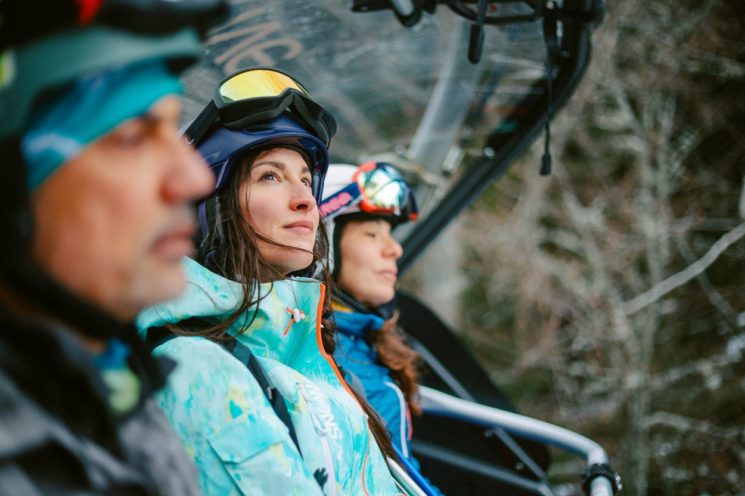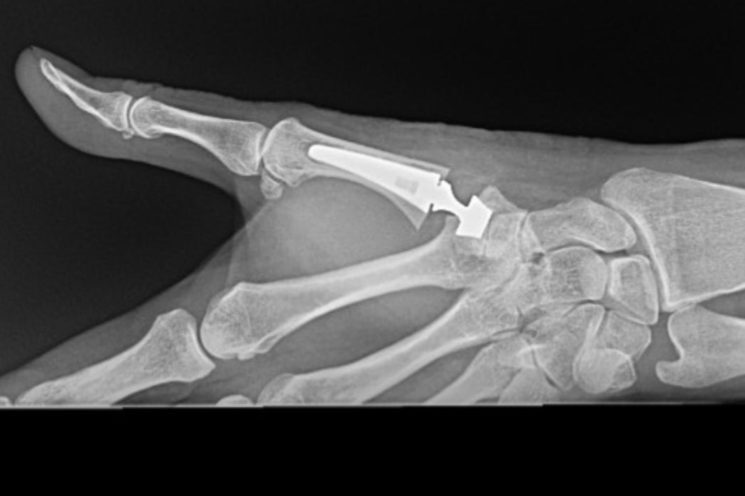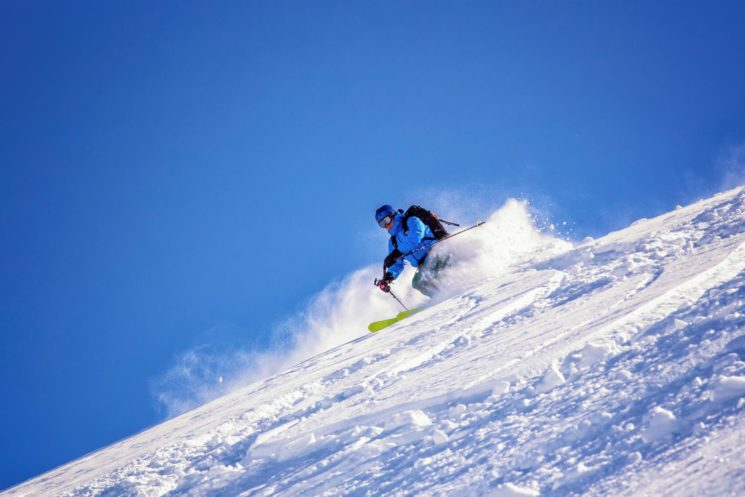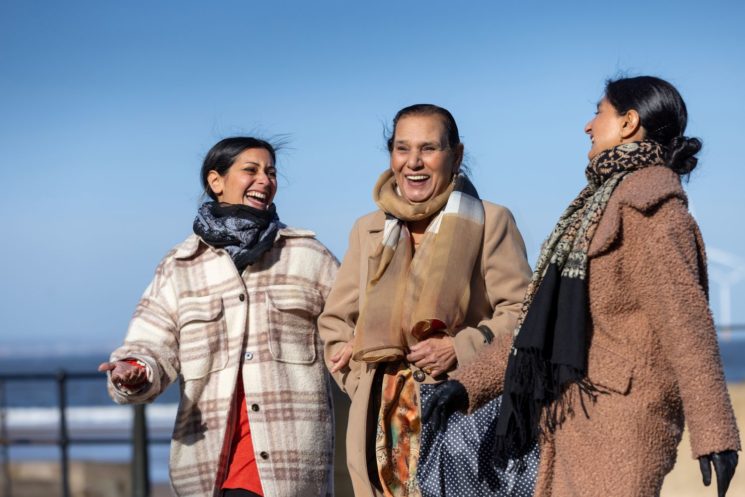
While the snow-covered slopes and luxury resorts attract thousands of people a year, skiing is a high-risk sport that requires a good standard of fitness to participate in. Knowing what the most common skiing injuries are and how to avoid them will help you feel confident and prepared for your next trip.
We spoke to Mr Martin Klinke, Consultant Orthopaedic Surgeon at Cromwell Hospital, to learn more about the most common types of skiing injury and how to prevent them.
What are the most common skiing injuries?
Skiers are particularly prone to injuries in the knees, shoulders, wrists, ankles, and fingers, often sustained during a fall.
The most common injuries that occur include:
- knee injuries, like anterior cruciate ligament (ACL) tear
- shoulder injuries, like rotator cuff tear
- dislocations
- fractures
- head injuries and concussion
Anterior cruciate ligament (ACL) tear
A ligament is a strong, fibrous band of tissue that stretches from bone to bone and supports your body’s structure. The anterior cruciate ligament (ACL) is located in the knee and connects the thighbone (femur) to the shinbone (tibia). Injuries or tears to this ligament often occur when playing sport, as a result of sudden stops or changes in direction.
During the injury, some people report hearing a ‘popping’ sound in the knee. Symptoms of an ACL tear include pain and swelling in the knee, discomfort when walking, and a reduced range of motion.
Rotator cuff tear
The rotator cuff is a group of muscles and tendons that stabilise and mobilise the three bones of the shoulder joint. This group of muscles and tendons can become damaged or torn during a fall, when people instinctively stretch their arms out to catch themselves.
Symptoms of a torn rotator cuff include pain, swelling, weakness, and difficulty moving the arm.
Dislocations
A dislocation is when the bones that meet at a joint become moved out of place, usually forcefully as a result of trauma.
Dislocation often happens in the shoulder, when the upper arm bone pops out of the shoulder socket. This is because the shoulder socket is particularly shallow, which gives the arm a greater range of motion but also makes it easier to damage during activities like skiing.
When a shoulder bone is dislocated, you may be able to see the lump or bulge of the bone underneath the skin, and your shoulder may look squared rather than rounded. It is often a very painful injury.
Fractures or broken bones
A fracture (also known as a broken bone) is when a bone becomes shattered, usually as a result of trauma. There are different types of fractures, including straight breaks across the bone, slanted breaks, or spiral breaks.
Fractures can occur to any bone in the body, but the wrists, ankles, and fingers are particularly susceptible to injury when skiing. During injury, you may hear a snapping or crunching sound, followed by swelling and pain. In severe cases, the injured site may be visibly deformed.
Head injuries and concussion
Head injuries sustained during skiing can be severe and even life-threatening, which is why it’s recommended to wear a helmet when out on the slopes.
A common but less severe type of head injury is concussion. Concussion occurs following a blow to the head, leaving the injured person with symptoms like loss of consciousness, disturbance of vision, and confusion.
A brain scan is required to ensure that there is no bleeding or swelling of the brain, as these types of symptoms require emergency treatment.
Tips to prevent skiing injuries
There are lots of things you can do to lessen your chances of sustaining a skiing injury. Skiing is a strenuous sport, so making sure you’re prepared physically and mentally is key to staying safe and having fun.
- Have a good level of physical fitness. If you have a sedentary lifestyle or don’t exercise often, you may struggle with the physical demands of skiing. Several months before your trip, you should begin doing regular exercise to ensure a good level of fitness upon arrival.
- Warm up. As with any strenuous activity, warming up is important to prevent injury – cold muscles are more likely to become injured. A 10-minute session of light aerobic activity, such as stretching or walking in place, will help prepare your body for the day ahead.
- Stay hydrated and energised. Both dehydration and hunger can make you feel tired, which won’t help your endurance when skiing. Taking regular breaks, drinking plenty of water and eating high-protein snacks will all help keep your energy levels topped up.
- Know your skill level. Whether you’re new to the slopes or a seasoned skier, it’s important not to attempt any activity beyond your capability and skill level. If you’re a complete beginner, signing up for skiing lessons can help you feel safe and confident.
- Dress appropriately. Your skiing gear should fit properly and be well-maintained – poor-quality kit is likely to pose a safety risk. You should also ensure your clothing is water- and windproof. Renting equipment at the resort can be an easy, cost-effective way to ensure you’re wearing safe, good-quality gear.
- Be well-rested. Having a good night’s sleep will ensure you’re attentive to any signs of potential danger while skiing.
- Ski with a partner. When it comes to skiing, there’s safety in numbers – having a skiing companion is important in case one of you gets into trouble on the slopes.
- Don’t overdo it. If you’re starting to feel tired or achy, listen to your body and stop skiing. Overexertion often leads to avoidable accidents and injuries.
Treatment for skiing injuries
If you find yourself experiencing a skiing injury, don’t wait until you’re home to be seen by a doctor. Severe injuries, like broken bones or head injuries, must be assessed immediately at your nearest A&E. If you are abroad, you must ensure your injury has stabilised before travelling home.
If you are still experiencing symptoms on your return, Cromwell Hospital’s comprehensive orthopaedic department can assist with the assessment, treatment and rehabilitation of a wide range of sports injuries, including those sustained during skiing.
Our world-class team includes orthopaedic surgeons, sports medicine consultants, physiotherapists, pain specialists and more. We are also partnered with several leading London orthopaedic groups, giving our patients access to a greater range of specialists.
Anterior cruciate ligament (ACL) repair or reconstruction
Anterior cruciate ligament (ACL) surgery involves the restoration of torn ligament using donor tissue from another part of the body. It takes around an hour to complete and is usually performed under general anesthesia. Following surgery, you will be supported by a specialist recovery and rehabilitative team.
Rotator cuff repair
A torn rotator cuff will occasionally be repaired using surgery, when treatments like physiotherapy or steroid injections haven’t worked.
Many repairs can be carried out using arthroscopic (keyhole) surgery, which is minimally invasive. Injuries that are more complex may require open surgery, so that your surgeon can fully access the joint.
Orthopaedic physiotherapy
Some patients may be recommended a course of physiotherapy for their injury, or as a rehabilitative treatment following an orthopaedic surgery.
Physiotherapy uses methods such as exercise, heat treatment and manual therapy to help patients recover movement and function following injury or illness.
About the consultant
Mr Martin Klinke is a Consultant Orthopaedic Surgeon and qualified sports medicine specialist. He is a member of Kensington Orthopaedics, a London-based orthopaedics group operating from Cromwell Hospital. He has a special interest in foot and ankle pathologies, including deformities, ankle replacement and sports injuries.



